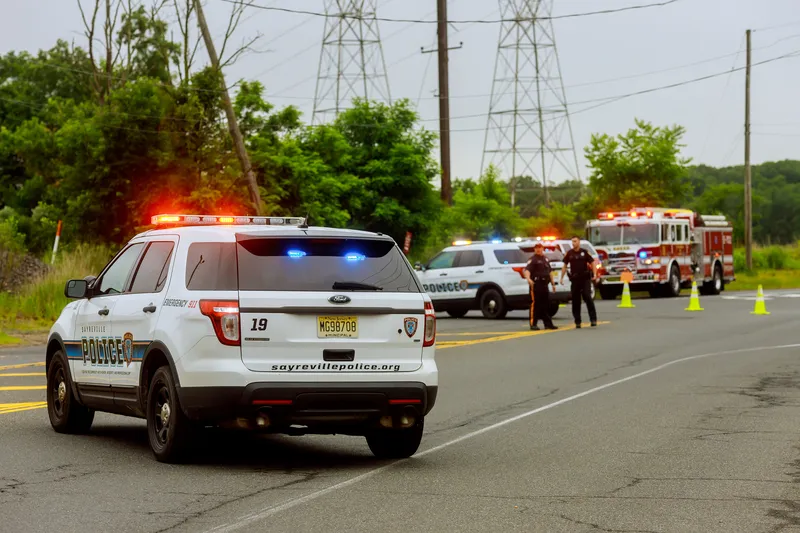US Transportation Secretary Anthony Foxx has announced that a new report on the state of America's transportation infrastructure, 2013 Status of the Nation's Highways, Bridges and Transit: Conditions and Performance, confirms that more investment is needed to maintain and improve the nation's highway and transit systems. Last month, Secretary Foxx highlighted the need for transportation investment in a speech that took aim at America’s infrastructure deficit and identified ways to use innovation and improv
March 3, 2014
Read time: 3 mins
US Transportation Secretary Anthony Foxx has announced that a new report on the state of America's transportation infrastructure, 2013 Status of the Nation's Highways, Bridges and Transit: Conditions and Performance, confirms that more investment is needed to maintain and improve the nation's highway and transit systems. Last month, Secretary Foxx highlighted the need for transportation investment in a speech that took aim at America’s infrastructure deficit and identified ways to use innovation and improved planning to stretch transportation dollars as effectively and efficiently as possible.
“We have an infrastructure deficit in this country, and we need to create more jobs – improving our roads, bridges, and transit systems will provide help on both fronts,” Secretary Foxx said. “As the President said in his State of the Union address last week, first-class infrastructure creates first-class jobs. This report shows the difference we made thanks to the Administration’s unprecedented investment under the Recovery Act, but it’s also clear that much more remains to be done.”
The Department of Transportation's Conditions and Performance report, based on 2010 data, estimates all levels of government would need to spend between US$123.7 billion and US$145.9 billion per year to maintain and improve the condition of roads and bridges alone. In 2010, federal, State and local governments combined spent US$100.2 billion on this infrastructure, including US$11.9 billion in American Recovery and Reinvestment Act dollars.
The report also indicates that as much as US$24.5 billion is needed per year to improve the condition of transit rail and bus systems. In 2010, total spending to maintain and expand transit systems was US$16.5 billion, a spending level also boosted temporarily by Recovery Act dollars.
“The Recovery Act contributed to the improved quality of our highways,” Federal Highway Deputy Administrator Greg Nadeau said. “It makes a good case for more investment - every dollar produces results for the American people.”
The report also finds that the nation’s state of good repair and preventive maintenance backlog for transit is at an all-time high of US$86 billion, and that it is growing by an estimated US$2.5 billion each year. An additional US$8.2 billion over current spending levels from all levels of government is needed annually to spend down the current backlog over the next 20 years.
Meanwhile, State and local governments are shouldering more than half the cost of annual investments to preserve and grow the nation’s transit systems.
The investment estimates for roads and bridges are based on ranges, which is new to the 2013 report. The higher ends are based on state-provided forecasts, which were used in past reports – they average out to annual growth of 1.85 percent per year. The lower ends presume vehicle miles travelled (VMT) will grow at an average annual rate of 1.36 percent per year, which is consistent with the average annual growth in the past 15 years.
“We have an infrastructure deficit in this country, and we need to create more jobs – improving our roads, bridges, and transit systems will provide help on both fronts,” Secretary Foxx said. “As the President said in his State of the Union address last week, first-class infrastructure creates first-class jobs. This report shows the difference we made thanks to the Administration’s unprecedented investment under the Recovery Act, but it’s also clear that much more remains to be done.”
The Department of Transportation's Conditions and Performance report, based on 2010 data, estimates all levels of government would need to spend between US$123.7 billion and US$145.9 billion per year to maintain and improve the condition of roads and bridges alone. In 2010, federal, State and local governments combined spent US$100.2 billion on this infrastructure, including US$11.9 billion in American Recovery and Reinvestment Act dollars.
The report also indicates that as much as US$24.5 billion is needed per year to improve the condition of transit rail and bus systems. In 2010, total spending to maintain and expand transit systems was US$16.5 billion, a spending level also boosted temporarily by Recovery Act dollars.
“The Recovery Act contributed to the improved quality of our highways,” Federal Highway Deputy Administrator Greg Nadeau said. “It makes a good case for more investment - every dollar produces results for the American people.”
The report also finds that the nation’s state of good repair and preventive maintenance backlog for transit is at an all-time high of US$86 billion, and that it is growing by an estimated US$2.5 billion each year. An additional US$8.2 billion over current spending levels from all levels of government is needed annually to spend down the current backlog over the next 20 years.
Meanwhile, State and local governments are shouldering more than half the cost of annual investments to preserve and grow the nation’s transit systems.
The investment estimates for roads and bridges are based on ranges, which is new to the 2013 report. The higher ends are based on state-provided forecasts, which were used in past reports – they average out to annual growth of 1.85 percent per year. The lower ends presume vehicle miles travelled (VMT) will grow at an average annual rate of 1.36 percent per year, which is consistent with the average annual growth in the past 15 years.








